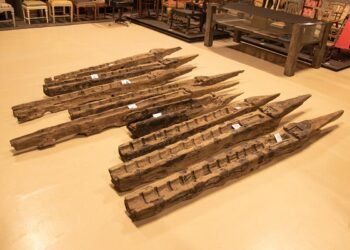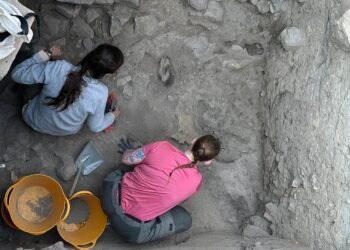Researchers from the University of Cambridge, University of London, and Liverpool John Moores University have conducted a comprehensive reevaluation of the famous Neanderthal site in Shanidar Cave, located in the Zagros Mountains of the Kurdish autonomous area of Iraq. The study takes a closer look at the “Flower Burial” hypothesis, which has long captivated the scientific community.

The Shanidar Cave, home to a trove of Neanderthal remains, gained notoriety in the 1950s and 1960s when Ralph Solecki, an archaeologist, proposed the “Flower Burial” theory. This groundbreaking idea suggested that Neanderthals had laid one of their own, known as Shanidar 4, on a bed of flowers for reasons ranging from medicinal purposes to expressions of affection and respect.
This theory challenged the traditional portrayal of Neanderthals as brutish and lacking in empathy. It opened up the possibility that they were capable of complex behaviors associated with caring for their deceased. The crux of this theory rested on the discovery of pollen in the burial pits, which hinted at funeral tributes.
However, recent research, published in the Journal of Archaeological Science, has cast doubt on the “Flower Burial” hypothesis. The team of scientists suggests that the pollen found in the Neanderthal grave sites might not be evidence of a floral grave gift at all but rather the work of bees. Their findings challenge the romanticized image of Neanderthal empathy and question the previously held beliefs about this ancient human species.

The researchers point to several pieces of evidence supporting their theory. First, they observed that the pollen clumps in the burial were inconsistent with the idea of whole flowers being placed in the grave. Instead, they argue that bees collected and deposited these pollen clumps.
Solitary bee burrows, still visible today in less-trafficked areas of the cave floor, serve as evidence for the presence of ancient bees. These bees could have introduced the pollen during or soon after the Neanderthal’s burial. Some of these burrows were up to 0.5 meters deep with bullet-shaped linings, indicating that ancient bees were indeed active in the area.
The researchers also point out that the region where Shanidar 4 and related Neanderthal remains were found had been open for more than a year before excavation. This offers an opportunity for bees to nest in the sediments and contribute to the accumulation of pollen.
Furthermore, the flowers represented in the Shanidar 4 pollen could not have been collected simultaneously in any season under modern conditions. This rules out the possibility of the flowers being gathered at the time of death. Instead, the researchers suggest that the pollen might have been deposited by bees over the course of a growing season.
The study’s lead author, Chris Hunt, emphasizes that the exact nature of Neanderthal burial practices remains open for further exploration. “I favor the idea that the Neanderthals put branches and other vegetation over the bodies,” Hunt explains, suggesting a protective function for certain plant species. However, the evidence remains equivocal, leaving room for ongoing research into Neanderthal burial rituals.
While the study raises doubts about the “Flower Burial” hypothesis, it is essential to remember that the Shanidar Cave still holds a significant place in the study of Neanderthals. The cluster of remarkably complete and deliberately placed Neanderthal skeletal remains, including Shanidar 4, provides valuable insights into Neanderthal behavior, their sense of space, and their relationship with their deceased.























